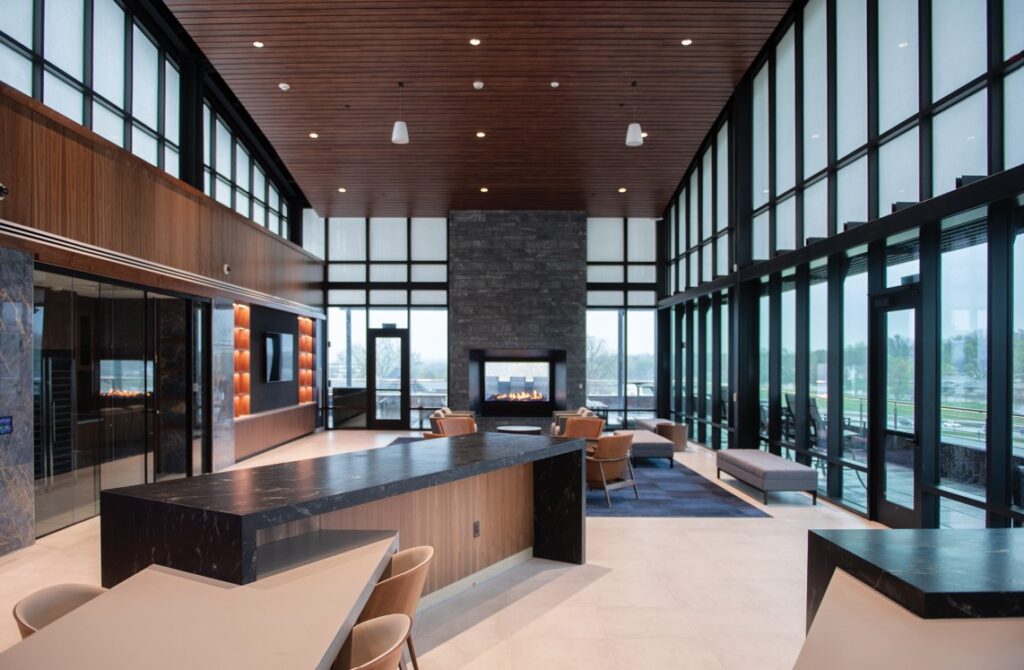How we solved it
Story Construction leads new on-the-job management method for employees and partners

KATE HAYDEN Jun 18, 2020 | 8:27 pm
4 min read time
1,055 wordsBusiness Record Insider, Education, Innovation and Entrepreneurship, Real Estate and DevelopmentAs the broader construction industry grapples with an exodus of experienced employees, Story Construction in Ames has turned to a novel new trailer on their project lots.
The Story 2.0 Method, as they call it, is designed to keep the upcoming needs and schedule of each project at the top of mind for experienced supervisors and the up-and-coming workforce who need to learn how to manage demands quickly.
“We as an industry have a challenge to get young people more quickly up to speed. We need to help them see it, and we need to have ways to share it,” said Mike Espeset, Story Construction president. “It’s not about us, necessarily, but it’s about those people that will come behind us.”
The problem
The construction industry is losing those longtime, educated employees in droves. Investopedia estimates the U.S. workforce is losing approximately 10,000 baby boomers to retirement a day; in construction, an estimated 434,000 construction jobs were vacant by April 2019.
“We’re retiring baby boomers at an alarming rate. This is an industry thing, not an ‘us’ thing. So we need to bring in young people, and we’re not doing so in the same number,” Espeset said. “Clearly we need to grow them up a lot more quickly than we ever had — a baby boomer that came back from the Vietnam War and came to work for us might put tools on for 20 years before they became a supervisor.”
The plan is the next step from Story Construction’s “1.0” method of communication between team members on a project, Espeset said.
“1.0 is a singularly smart person, generally the project superintendent, that shows up every day with the burden of telling everybody what to do,” Espeset said.
In former days of construction, that “singularly smart person” had years of climbing up the ladder and learning the construction site from the inside.
Younger employees are expecting more choice in the job market — and statistically, many millennial employees won’t be with the company that long to learn the institutional knowledge.
“We don’t have the mechanisms built in to pass this stuff down. This trailer does that,” Espeset said.
“They do not want to wait, and we don’t have the luxury of having them wait, so we need them to grow them up quickly to help them be successful and help our clients — and everybody we deal with — be successful. Our industry does not have a very good way to transfer knowledge and experience from one job to the next,” he added.
The process
The trailer does not look particularly unique from the outside on a project site. But as Story Construction and subcontractors started on Iowa State University’s Gerdin Business Building project in spring of 2019, the trailer, 12 feet wide and 46 feet long, was the project management hub Story Construction had been searching for.
Inside, 6-foot-tall planning boards run about 40 feet long across two walls; sections split the board into multiple calendar forms, providing a look at the week’s priorities and the months of schedule ahead in the project.
The board reads from right to left. Each trade contractor is assigned a unique Post-it color. The entire board is a low-tech solution to be more effective.
“Post-it notes and Sharpies are very disarming. … The men and women that get involved in building construction projects have all varying degrees of technological literacy. If it’s password protected, it’s not helpful for what we do here,” Espeset said. “If we’re relying on one person to update the schedule or one person to do this or that — it doesn’t mean that it’s untruthful, it’s just never as right as right here.”
Story Construction leads a weekly planning meeting on-site with the goal of keeping the meeting brief and thorough, looking ahead at the schedule of the next six weeks.
Around 15 site leaders are responsible for managing up to 300 workers on a job site at a time, Espeset said: “We’ll get through 15 people in 10 minutes.”
“This trailer allows the orchestration and coordination of all of that, so it’s a good sync,” he said.
Story Construction also has a system in place to identify what variants are keeping work from happening: During the weekly meeting when contractors are asked what tasks were not finished, managers choose among 10 variants that
caused late or incomplete work.
Espeset thinks of it like a parade: The floats are lined up to travel for a set amount of time, and organizers are anxious to keep floats moving at the same pace — minimizing the amount of time attendees wait to see one float after another.
“We care more about when we finish than when we start,” Espeset said. “Our industry is amazing at starting stuff. We can start, start, start like it’s our job, but it’s hard to finish. We want predictable work that can start and finish without interruption. That’s the goal.”
The development
Starting six years ago, Story Construction worked with industry consultant Mike Carson to develop a new system.
“He really devoted his career to bringing joy back to the craftsman, and so he came up with most of this,” Espeset said. “I would say the journey has been more learning than challenging. … It’s challenging to get people to be willing to plan their work in detail, and to tell the entire team about it.”
Story Construction debuted the 2.0 method while working on the Ames headquarters for Workiva, which opened in 2014, and made tweaks to the trailer layout and leadership meetings as they rolled out training.
The method framed by the Story 2.0 trailer has reinforced communication and training of upcoming employees and subcontractors.
“If you think about a subcontractor, they might employ 100 people. We could have that same subcontractor job after job, but never have the same people,” Espeset said. “This is the most comprehensive possible mechanism that we know to solve what ails us as an industry, so this is where we’re focused.”
“We want to do business with people that believe what we believe. That’s true on the customer side, but that’s also true of the people that will join our company, and subcontractors, suppliers, design team members that we work with. You need to believe that there’s value in this,” he added.








